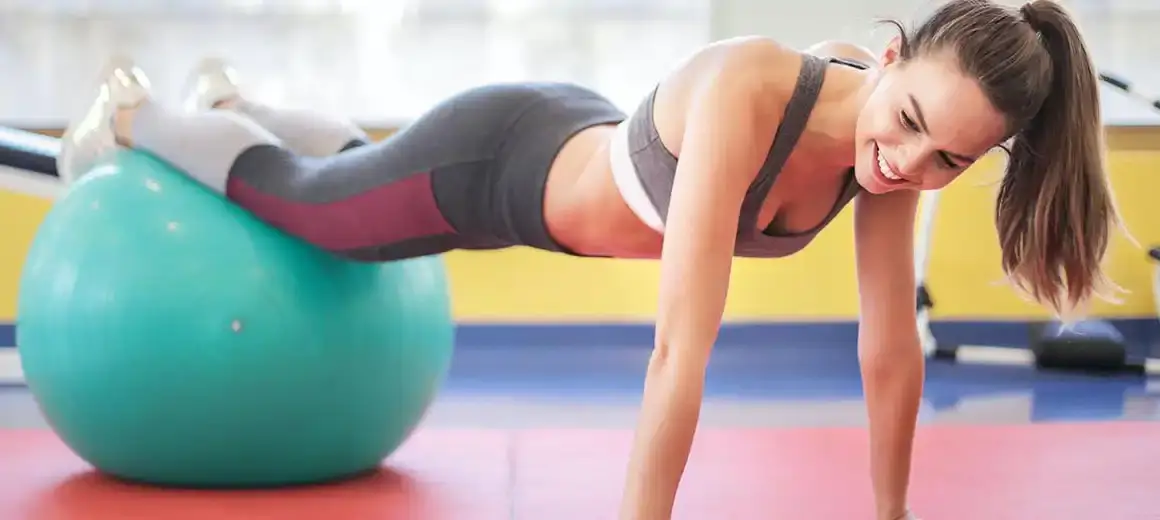Can You Exercise While On Your Period?

- February 03, 2023
- by The Ginger-U Team
Period symptoms are different for everyone who bleeds. So, the answer to whether it is safe to exercise during periods depends on the severity of symptoms. Obviously, someone with crippling back ache or cramps wouldn’t choose to go for a 5-kilometer walk in the wee hours. But what about mild to moderate exercise? Is it beneficial? Or should you only rest when menstruating? Keep reading to get the answers.
Let’s begin by understanding the changes that take place in women’s bodies during menstruation.
Hormonal changes: An increase in progesterone and estrogen levels causes the uterus to build up a lining of blood and tissue.
Shedding of the uterus lining: When the egg is not fertilized, the hormones drop, and the uterus sheds the built-up lining, causing bleeding.
Cramping: The uterus contracts to help shed the lining, which can cause cramping and discomfort.
Mood swings: Hormonal changes during a period can also affect mood, causing irritability, sadness, or anxiety.
Breast tenderness: Hormonal changes can cause breast tissue to become swollen and tender.
Fatigue: The body uses energy to shed the uterus lining, which can cause fatigue.
Changes in appetite: Hormonal changes may impact appetite. Some women may experience increased hunger and cravings, while others may feel less hungry.
Water Retention and Bloating: Fluctuations in progesterone and estrogen levels cause water retention and bloating, which can affect metabolism and hunger signals in the body.
Other types of pain: During periods, some women may also experience headache, migraine, back ache, muscle ache, and joint pain in addition to cramps.
Given These Changes, Should You Exercise During Periods?
Yes, women can exercise during periods. Physical activity can help alleviate menstrual cramps and improve mood. However, listening to your body and adjusting your routine as needed is essential. If you feel particularly tired or uncomfortable, take a rest.
Are There Any Benefits To Exercising During Periods?
Yes, exercising during periods has several benefits.
Relief from menstrual cramps: Exercise can help relieve menstrual cramps by increasing blood flow to the uterus.
Improved mood: Exercise can release endorphins—natural mood boosters that may also alleviate fatigue and bloating.
Menstrual cycle regulation: Regular exercise can help regulate menstrual cycles and reduce the severity of symptoms.
Reduced stress: Exercise can reduce stress and tension, which can be especially beneficial during menstruation.
Increased energy: Exercise can boost energy levels and improve overall well-being during your period.
Which Exercises Are Best During Periods?
Yoga: Yoga helps ease cramps and reduces stress, a common problem during periods.
Walking: Walking is a low-impact exercise that helps increase blood flow, reduce bloating, and relieve cramps.
Pilates: Pilates improves posture, flexibility, and core strength, thus lowering menstrual pain.
Cycling: Cycling is a moderate form of exercise that helps improve circulation and alleviate cramps.
Aerobic exercise: Aerobic exercises like jumping jacks, running, and jumping rope are great for improving cardiovascular health and reducing stress during periods.
Weightlifting: Weightlifting can help improve muscle tone and strength, which can contribute to alleviating menstrual pain and cramping.
Dancing: Dancing is a fun and energetic exercise that can help reduce cramps and bloating.
Stretching: Stretching works well for alleviating menstrual pain by improving flexibility and reducing tension in the body.
Hiking: Hiking is a good way to get moving and go outside. It helps reduce stress and cramps during periods.
Which Exercises Should You Avoid During Period?
Avoid high-impact exercises outdoor or during gym workouts when on period. These include:
Running: Running can cause discomfort and worsen period cramps.
Jumping: Jumping exercises like plyometrics and box jumps can put added pressure on the lower abdomen, causing increased discomfort.
Heavy weightlifting: Heavy weightlifting can cause abdominal cramping and discomfort, especially for women with heavy periods.
Intense cardio: Intense cardio exercises like kickboxing, aerobics, and high-intensity interval training (HIIT) can increase cramping and discomfort.
Contact sports: Contact sports like basketball, soccer, and rugby can add pressure on the lower abdomen, leading to increased discomfort and cramping.
It is sensible to listen to your body during your period and avoid exercises that cause discomfort or pain. Choose light exercise, like yoga or walking, for getting the best results.

Comment